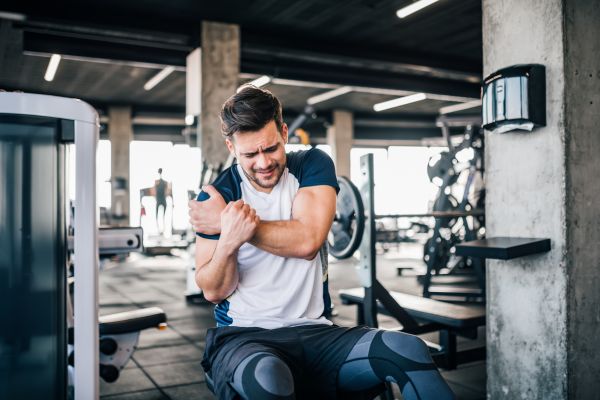Let’s be real for a second — knee injuries suck. Whether it’s from sports, a freak twist on the stairs, or just wear and tear over time, the pain and limitations that come with a bum knee can throw off your whole routine. But here’s the good news: your body wants to heal. And with the right rehab exercises for knee injury, you can help it bounce back stronger than ever.
The thing is, not all exercises are created equal. Some can help rebuild strength and mobility, while others might just aggravate things. So, if you’re trying to figure out what actually works — and what doesn’t feel like punishment — stick around. We’re going deep into the world of knee rehab, and how to do it smart.
Why Rehab Exercises for Knee Injury Matter More Than You Think
Okay, so maybe you’re tempted to just rest and let the swelling go down. Totally normal. But here’s the truth: doing nothing can actually slow down your recovery. Your knee might start to stiffen up. Muscles weaken. And before you know it, you’re stuck with long-term mobility issues.
That’s where rehab exercises for knee injury come in. They’re not about pushing through pain — it’s about helping your body gently rebuild. And yeah, the keyword here is gently. You’re not trying to run a marathon. You’re just trying to get back to walking pain-free, bending your leg without that weird clicking sound, and maybe even getting back to squats (eventually).
Start Slow: The Early Stage of Recovery
If your knee is fresh off an injury or surgery, the idea of exercising might feel downright terrifying. That’s fair. Early-stage rehab is all about reducing inflammation, gently restoring range of motion, and activating those muscles without going full beast mode.
Think of it like this: you’re reintroducing your body to movement. Something as simple as quad sets, where you tighten your thigh muscle while your leg is straight, can be a game-changer. It’s subtle — barely feels like work — but it’s laying the foundation.
And let’s not forget heel slides. You just lie back, bend your knee slowly, and then straighten it again. Sounds basic, right? But if your knee’s stiff, this will feel like a big deal. And honestly, that’s okay. Celebrate those tiny wins.
Mid-Stage: When Strength Meets Stability
Once you’ve got some mobility back, it’s time to gently up the ante. At this stage, rehab exercises for knee injury focus more on building strength and improving balance — without putting too much pressure on the joint.
This is where straight-leg raises come in. You lie flat, keep one leg bent, and raise the other just a few inches off the ground. Simple? Yes. But your quads will light up in the best way. And your knee? It’ll thank you for not forcing any heavy movement.
You might also try standing hamstring curls — holding onto a chair and curling your foot back like you’re trying to kick your own butt. (Kind of satisfying, actually.) These little movements build the muscles that support your knee and reduce the chance of future injuries.
Let’s Talk Balance and Alignment
Here’s something most people overlook: knee pain isn’t always just about the knee. Weak glutes, tight hips, and poor alignment can throw everything off. So part of effective rehab exercises for knee injury is working on the whole leg — not just the sore spot.
Adding in mini squats (we’re talking super shallow here) or step-ups on a low step can help your brain and body get used to stabilizing again. Start slow. No need to turn it into a HIIT workout. You’re retraining your muscle memory, not chasing a PR.
Balance work is underrated too. Try standing on one leg for a few seconds at a time. Sounds easy… until you try it. This kind of neuromuscular training is gold for preventing re-injury and boosting long-term stability.
What to Avoid (Because You’re Not a Superhero Yet)
Look, you want to get better — and fast. But rushing it? That’s how setbacks happen. Here’s the deal: if an exercise makes your knee swell up or throb afterward, it’s too much. Pain is your body’s way of saying “hey, slow down!”
Avoid deep lunges, full squats, or anything high-impact until your knee’s fully ready. And definitely don’t skip rest days. Healing isn’t just about movement — it’s also about letting your tissues rebuild. You wouldn’t fix a car while it’s running, right?
And one more thing — don’t just copy what you saw on YouTube. Everyone’s injury is different. Ideally, a physical therapist should guide you. But if you’re doing this solo, stay mindful, go slow, and listen to your body.
Staying Consistent Without Burning Out
One of the hardest parts of rehab? Sticking with it. It’s not flashy. It’s not instantly gratifying. But rehab exercises for knee injury only work if you actually, you know… do them.
So set a schedule that feels realistic. Maybe it’s ten minutes in the morning while your coffee brews. Or a few sets of movements before bed. The key is consistency over intensity. Don’t overthink it. Just start.
And if you ever feel like giving up? Remind yourself what this is all for — walking pain-free, hiking again, dancing at that wedding, or just sitting cross-legged without wincing. You’re not just rehabbing a joint. You’re reclaiming your freedom.
Wrapping It Up: Rehab Is a Journey, Not a Race
So, yeah. Rehab exercises for knee injury aren’t glamorous. But they are powerful. When done with intention and patience, they can help you rebuild strength, restore mobility, and feel more like yourself again.
There’s no shortcut here — but that’s okay. Healing takes time, and progress comes in tiny steps. Some days will feel great. Others? Not so much. But every stretch, every controlled movement, every moment you choose to show up for your recovery… it all adds up.
So breathe, be kind to your knee, and keep moving forward. You’ve got this.







